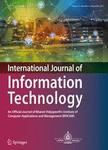版权所有:内蒙古大学图书馆 技术提供:维普资讯• 智图
内蒙古自治区呼和浩特市赛罕区大学西街235号 邮编: 010021

作者机构:Department of Computer Science Shaheed Rajguru College of Applied Sciences for Women University of Delhi Delhi India Department of Computer Science Dyal Singh College University of Delhi Delhi India Department of Computer Science Indian Institute of Technology Delhi India
出 版 物:《International Journal of Information Technology (Singapore)》 (Int. J. Inf. Technol.)
年 卷 期:2022年第14卷第3期
页 面:1543-1554页
主 题:Autoregressive language model Generative Pre-trained Transformer-3 (GPT-3) Natural language processing Pre-trained deep learning model Self-attention Software requirement specification (SRS)
摘 要:During the software requirement specification, the use case-based approach is used for requirements elicitation and analysis, for object-oriented software development. For identifying the use cases, traditionally, manual approach is used. Though some researchers have used semi-automated NLP techniques but it requires each word in a sentence to be tagged with its part-of-speech. In this paper, we exploit Generative Pre-trained Transformer-3 (GPT-3) for identifying the use case model by parsing the given software requirements. GPT-3 is an autoregressive language model that uses deep learning to produce human-like text. It is a language prediction model that can be tuned with Few-Shot learning to extract functional requirements in a multilingual setting. We present MUCE, a Multilingual Use Case model Extractor tool for the extraction of use cases, actors and their relationships from the given users’ software requirements. Further, not all requirement documents are English-centric and might be written in some native language. In such scenario, an automated, multilingual tool for structuring the use case model will really be a boon. The benefit of such an automated tool is that it helps in extracting use cases model as requirements specification quickly;overcoming the worries involved in manual ways. This tool can also prove to be a feedback to improve and fine-tune functional requirements so as to make them more complete. We evaluated the performance of our tool using Confusion Matrix. We authenticate our findings by validating various user requirements case studies written in different languages particularly, English, Spanish and French. Our tool performs better than existing state-of-the-art use case model extraction techniques. Our research endeavor will assist software designers and architects to generate actors and use cases instantaneously from the given users’ software requirement documents, and save their time. © 2022, The Author(s), under exclusive licence to B